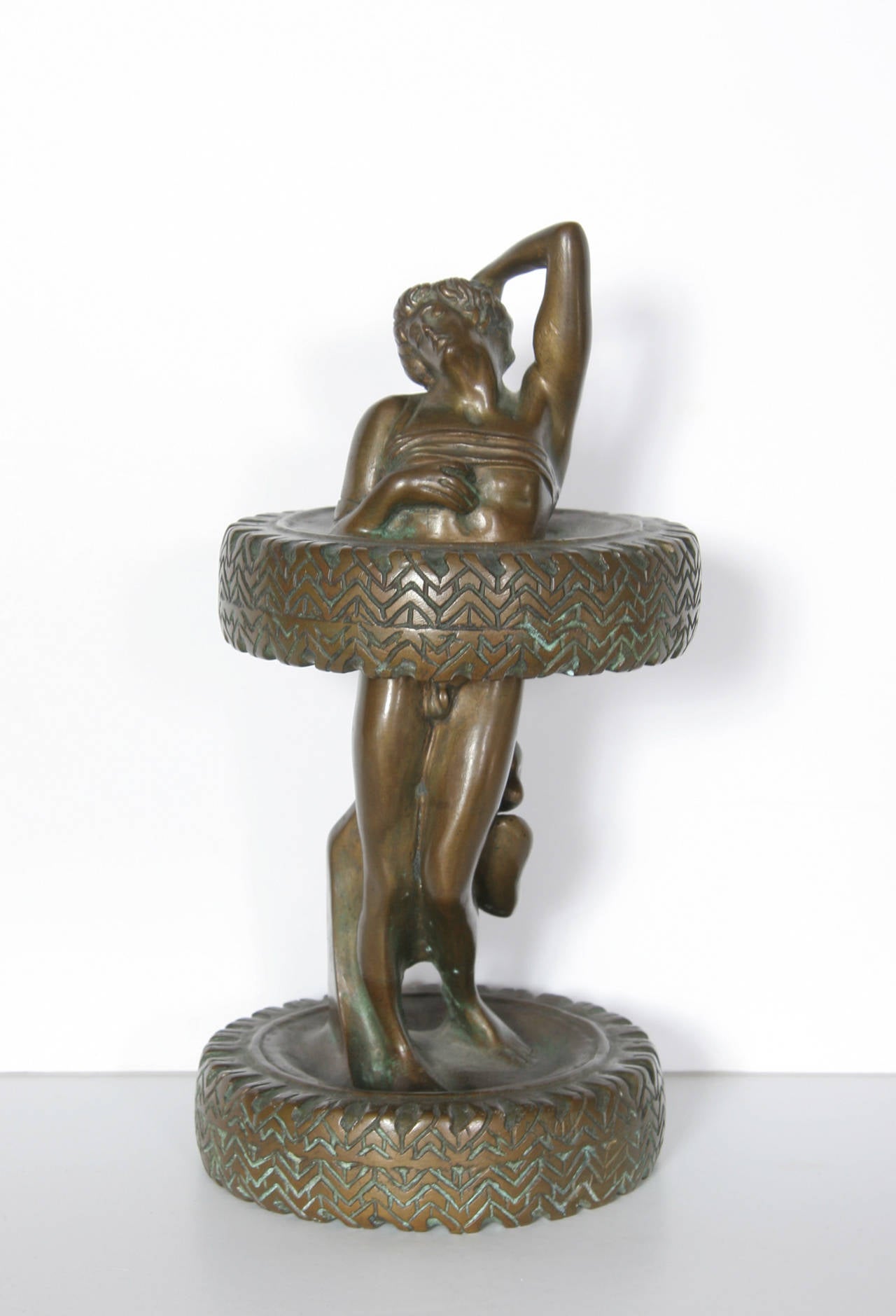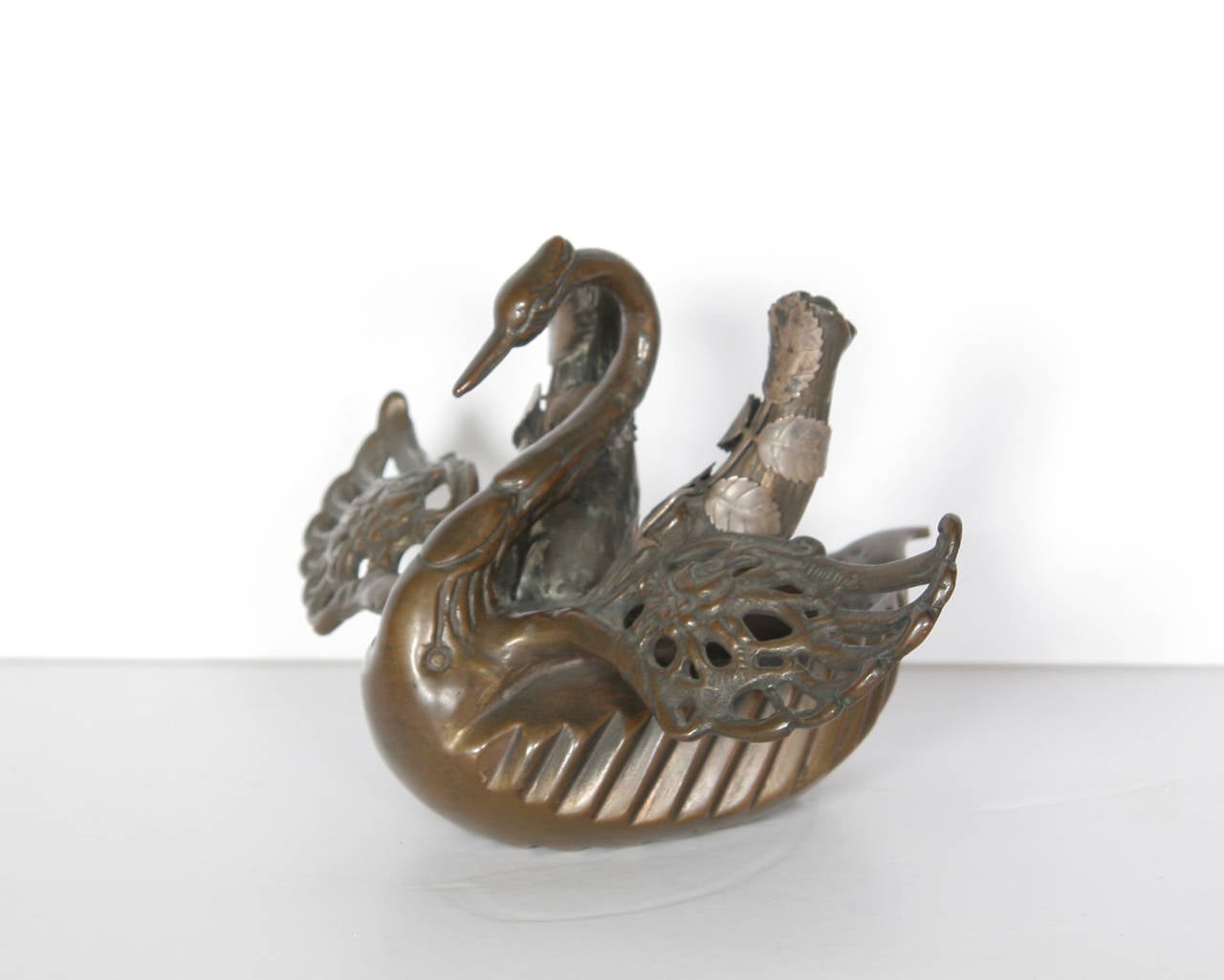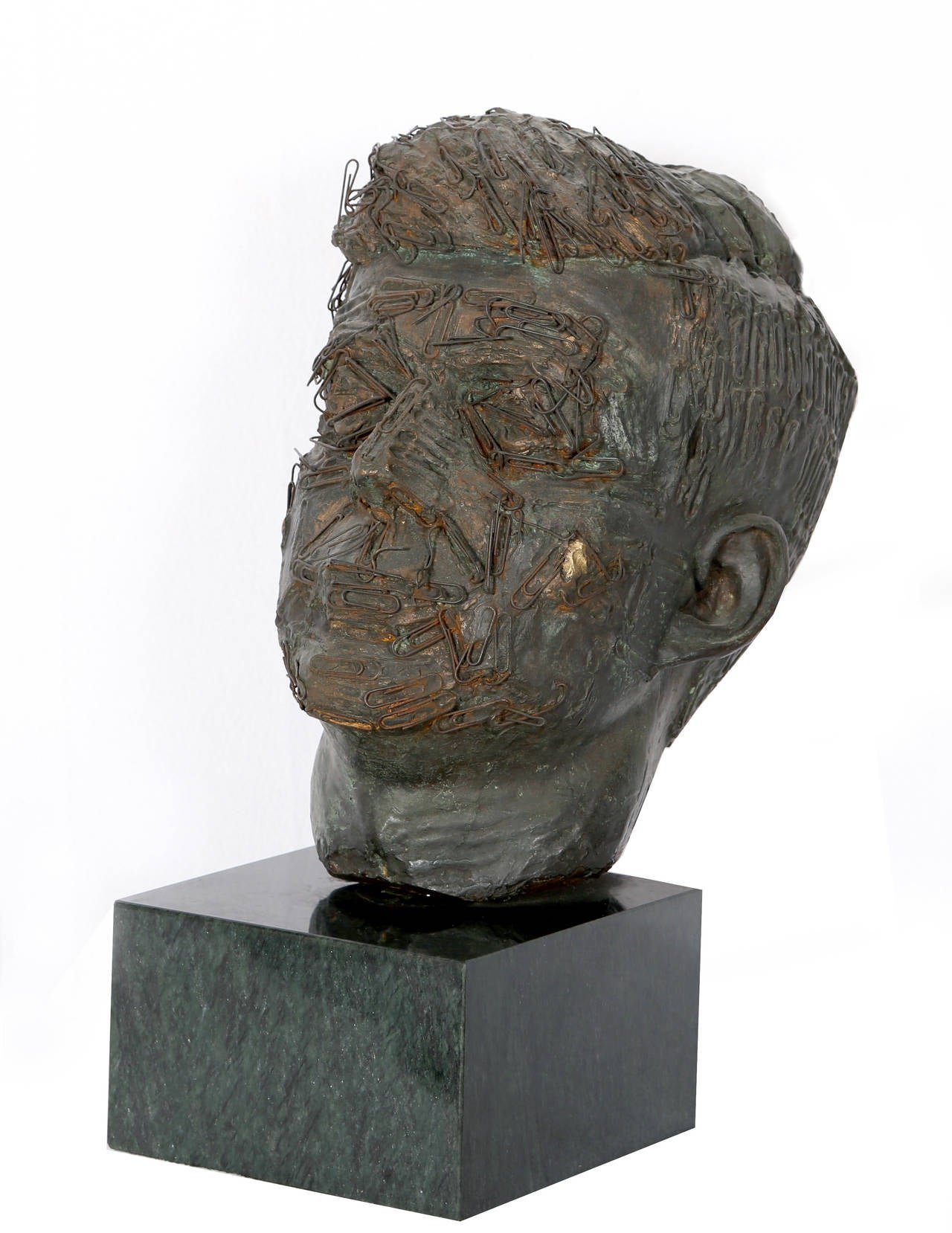Salvador DalíDon Quixote Bas Relief in Original Velvet Box1979
1979
About the Item
- Creator:Salvador Dalí (1904 - 1989, Spanish)
- Creation Year:1979
- Dimensions:Height: 27 in (68.58 cm)Width: 18.5 in (46.99 cm)
- Medium:
- Movement & Style:
- Period:
- Condition:
- Gallery Location:Missouri, MO
- Reference Number:1stDibs: LU747310023702
Salvador Dalí
Instantly recognizable by his waxed, upturned mustache, the flamboyant Salvador Dalí is one of modern art’s most distinctive figures. He is also one of the icons of the 20-century avant-garde Surrealist movement, whose dreamlike images, drawn from the depths of the unconscious, he deployed in paintings, sculptures, prints and fashion, as well as in film collaborations with Luis Buñuel and Alfred Hitchcock.
Dalí was born in Figueres, Catalonia, and even as a youngster, displayed the sensitivity, sharp perception and vivid imagination that would later define his artworks. In these, he conjured childhood memories and employed religious symbols and Freudian imagery like staircases, keys and dripping candles to create unexpected, often shocking pieces.
Dalí's use of hyperrealism in conveying Surrealist symbols and concepts that subvert accepted notions of reality is epitomized in what is perhaps his most recognizable painting, The Persistence of Memory (1931), in which he depicts the fluidity of time through melting clocks, their forms inspired by Camembert cheese melting in the sun. His artistic genius, eccentric personality and eternal quest for fame made him a global celebrity.
“Each morning when I awake, I experience again a supreme pleasure,” he once said. “That of being Salvador Dalí.”
Find original Salvador Dalí paintings, prints, sculptures and other works on 1stDibs.
- ShippingRetrieving quote...Ships From: Missouri, MO
- Return PolicyA return for this item may be initiated within 2 days of delivery.
- Woman with TambourineBy Pierre Auguste RenoirLocated in Missouri, MOWoman with Tambourine By Pierre Auguste Renoir (French, 1841-1919) Without Frame: 29.5" x 17.75" x 1.25" With Frame: 36" x 24.5" x 3.25" Signed Lower Right Renoir was born on Februa...Category
Late 19th Century Impressionist Figurative Sculptures
MaterialsBronze
- Native American Girl with DollBy Dave PowellLocated in Missouri, MONative American Girl with Doll By Dave Powell (American, b. 1954) Signed on Back 17.5" x 8" Dave Powell is a native son of Montana, in a world of change and transition; few can say they have roots in a single geography that go back four generations. Dave's pedigree in art is just about as deep. He is the son of artists Ace Powell and Nancy McLaughlin Powell. That heritage leads back to the likes of Charlie Russell and Joe De Young, both famous for their abilities to "tell the story" through their art. His father, Ace Powell, was a prolific Western artist whose first childhood paint-box set was a gift from Charlie and Nancy Russell. Dave became a serious student of art in his mid-teens, and has been a professional artist most of his adult life. Over the years he has worked with Bob Scriver, Ned Jacob and Robert Lougheed. Dave will be the first to give thanks...Category
20th Century American Realist Figurative Sculptures
MaterialsBronze
- Going into BattleBy Carl KaubaLocated in Missouri, MOCarl Kauba "Going into Battle" c. 1920s Bronze with Brown Patina Signed approx 10 x 10 x 4 (including wooden base) This Austrian sculptor was born in Vienna in 1865. His teachers were Karl Waschmann (1848-1905), known for his ivory sculptures and portrait plaquettes of contemporary celebrities, and Stefan Schwartz (1851-1924), who exhibited in Paris, including the Exposition Universelle of 1900 where he won a gold medal. Kauba's intricate bronzes, imported to the United States between 1895 and 1912, were cast at the Roman Bronze Works. Kauba was part of the nineteenth-century tradition of polychrome bronze sculpture. There were several types of patinas on a single statue: he could render the color of buckskin, variously tinted shirts, blankets, feathers, as well as beaded moccasins. Reportedly, Kauba came to America around 1886. Inspired by the Western tales of German author Karl May, he traveled to the West and made sketches and models. Critics, however, pointed out inaccuracies of costume and other details. For instance, the guns that his "mid-nineteenth-century" figures use are models produced after 1898. Apparently he did all of his works back in Vienna. Besides the variety of color, Kauba's bronzes show a great range of textures and his style is highly naturalistic. The sculptor loved ornament, some of which he rendered with coiled wire for reins, rope and feathers in headdresses. He successfully rendered figures in motion and often executed compositions with more than one figure. Berman (1974) illustrates non-Western subjects by Kaula, such as the pendants Where? and There (ca. 1910), a seated Scottish couple, impressive in the expressions and the details on patterned fabrics of both sitters. Another genre piece is Buster Brown...Category
Early 20th Century Realist Figurative Sculptures
MaterialsBronze
- Jockey On HorsebackBy Hans GuradzeLocated in Missouri, MOHans Guradze (German, 1861-1922) "Jockey On Horseback" Bronze Approx. 19.5 x 17 x 6 inches Signed "H. Guradze Berlin" on BaseCategory
1890s Realist Figurative Sculptures
MaterialsBronze
- 2 Seconds To GoBy Bob ScriverLocated in Missouri, MOBob Scriver (American 1914-1999) "2 Seconds To Go" 1971 Bronze approx. 24" H. x 12W Signed and Titled on the Base Ed. 18/35 sculptor who carried on the realist...Category
1970s American Realist Figurative Sculptures
MaterialsBronze
- Regina EnthronedBy Lazzaro DonatiLocated in Missouri, MOLazzaro Donati (Italian 1926-1977) "La Regina" Bronze Signed on Base Size: approx 19 x 9 x 9 inches Lazzaro Donati (1926-1977) was born in Florence in 1926 and attended the Academy of Fine Arts. He began to paint in 1953, and in 1955 held his first exhibition at the Indiano Gallery in Florence. Within three years eleven exhibitions followed in Italy, and as his reputation grew he was invited to give major exhibitions in London, Paris, New York, Chicago, Rio de Janeiro and Montevideo. He is considered one of the foremost contemporary Italian painters and his paintings hang in museums and private collections throughout the Americas, Europe and Asia. Mr. Donati lived and worked at 24 Piazza Donatello in Florence, the square where generations of artists have created works worthy of the great Florentine tradition. As you entered the narrow hallway to his studio, a gilded life-size Venetian angel beckoned you to his door. Once inside, the present faded away and you found yourself in an atelier where early masters might have worked during the Renaissance. Within, luxurious Persian rugs set off the innumerable objects d'art and antique furnishings. Light poured in through the sloping glass wall on the north side. A dramatic stairway led to an overhanging balcony which served as a private gallery where the artist hung some of his favorite early works. To the left of the entrance was a smaller studio where Donati sculpted, with a window overlooking the famous old English cemetery where tourists laid flowers on the grave of Elizabeth Barrett Browning. In the main studio itself, where Donati received his clients in an atmosphere as polished as an office of a top executive, one hardly realized that it was here that the artist actually painted. His easel was covered with Persian blue velvet, the painting on the easel was already framed, his chair was upholstered in red velvet and on his palette the colors were arranged with the precision of a Byzantine mosaic. In a corner stand were his latest works, framed and ready to be sent off to his next exhibition in Europe or America. Donati was a born host with a warm welcome, an elegant man who possessed enormous charm a good nature and a keen sense of humor. Apparently shy, he preferred to speak on subjects extraneous to his art, purposely distracting you from his paintings, then leading you back to them, tactfully and without pretension. He spoke fluent French and English as well as some Spanish and German. "After all", he said, "you've got to know how to sell a painting to everyone." He had no sympathy for the "drip and splash" studios of his contemporaries, preferring to keep his studio tidy and spotless. "Painting is a matter of precision", he said, "If a painter can't put his paint where he wants it to go, I don't see how he can call himself a painter. For me it is absolutely necessary to control the paint." When asked to reveal the technique he used to achieve the enamel-like finish typical of his paintings he answered, "That is a secret between me and my butler. Actually, most of my paintings are done by him!" But in fact behind the façade, Donati was a serious craftsman who devoted to his painting as a way of life and means of expression. From the beginning of his career, his paintings revealed a striving for perfection and continual research in problems of style and technique. His early works indicated a momentary interest in surrealism and abstract art; they were predominantly two dimensional, depending on line and strong color. But by 1958, with his painting The Lady with a Fan...Category
Late 20th Century Modern Figurative Sculptures
MaterialsBronze
- The Michelin SlaveBy Salvador DalíLocated in Long Island City, NYArtist: Salvador Dali, Spanish (1904 - 1989) Title: The Michelin Slave Year: 1967 Medium: Bronze Sculpture, Signature and number inscribed Edition: 5/6 Size: 12 in x 6 in d. (...Category
1960s Surrealist Figurative Sculptures
MaterialsBronze
- Swan-ElephantBy Salvador DalíLocated in Long Island City, NYArtist: Salvador Dali, Spanish (1904 - 1989) Title: Swan-Elephant Year: 1967 Medium: Bronze Sculpture, Signature and number inscribed Edition: 5/6 Size: 4.5 in. x 8 in. x 5.5 i...Category
1960s Surrealist Figurative Sculptures
MaterialsBronze
- Bust of John F. KennedyBy Salvador DalíLocated in Long Island City, NYThis iconoclastic sculpture links two of the twentieth century’s most renowned figures: President John Fitzgerald Kennedy and Salvador Dalí. Cast in wax and decorated with paperclip...Category
1960s Surrealist Figurative Sculptures
MaterialsBronze
- Centaur, Outdoor Sculpture by Ernst NeizvestnyBy Ernst NeizvestnyLocated in Long Island City, NYArtist: Ernst Neizvestny, Russian (1926 - 2016) Title: Centaur Year: 1973-89 Medium: Bronze Sculpture, signature and numbering inscribed Edition: 7 Size: 84 x 65 x 36 in. (213.36 x 1...Category
1970s Surrealist Figurative Sculptures
MaterialsBronze
- Teutonia, Bronze Sculpture, by Stefan Vladescu 1992By Stefan Matty VladescuLocated in Long Island City, NYArtist: Stefan Vladescu, Romanian (1952 - ) Title: Teutonia Year: 1992 Medium: Bronze Sculpture on marble base, signed and dated Size: 18.5 x 10 x 9 inches Base 2 x 11 x 10 inchesCategory
1990s Surrealist Figurative Sculptures
MaterialsBronze
- Shadow: After the EgyptianBy David CregeenLocated in Long Island City, NYArtist: David Cregeen, British (1945 - ) Title: Shadow: After the Egyptian Year: circa 1985 Medium: Bronze Sculpture with Patina, signature inscribed Edition: 5 Size: 48.5 x 13.5 x ...Category
1980s Surrealist Figurative Sculptures
MaterialsBronze




